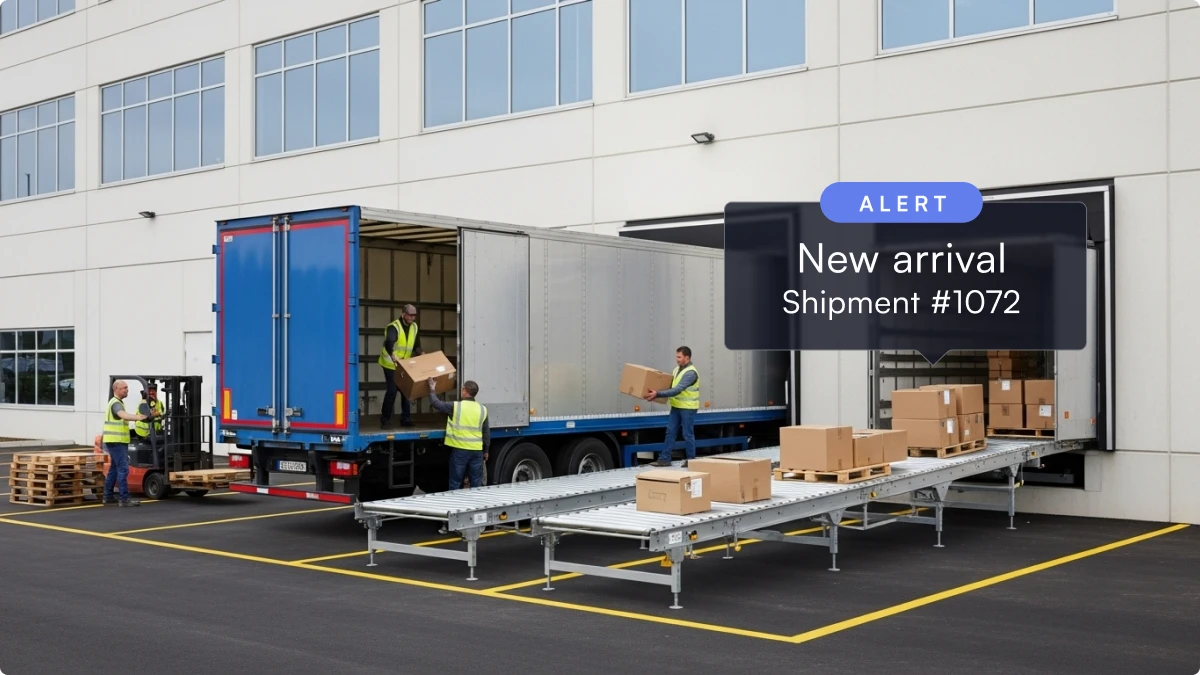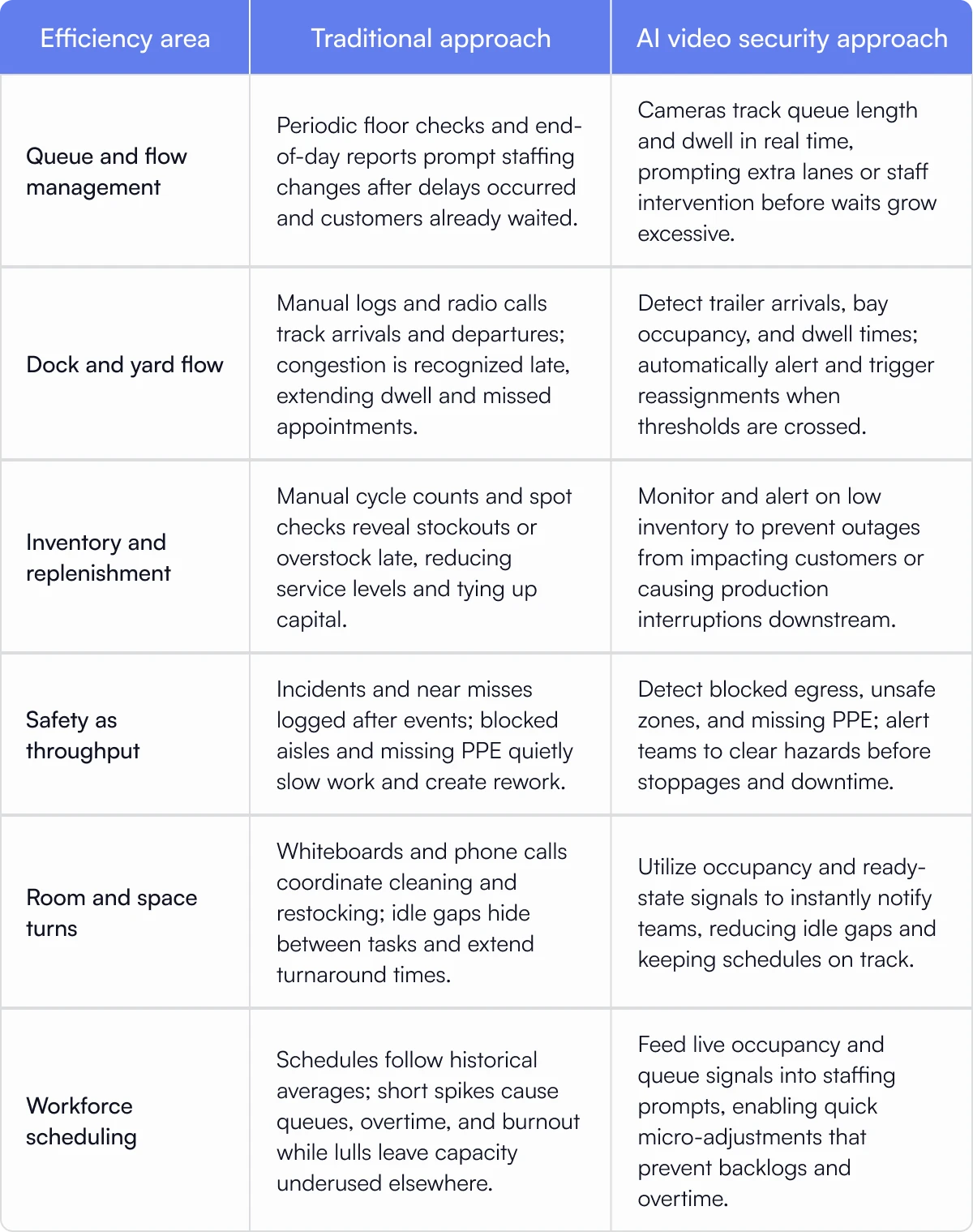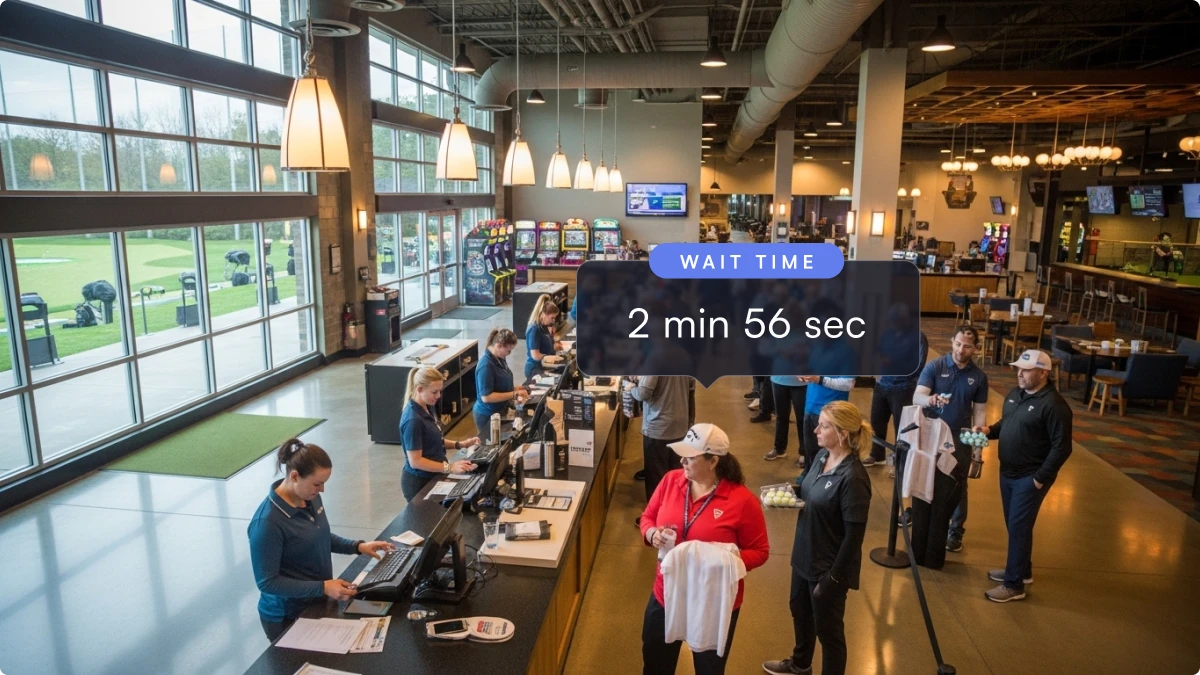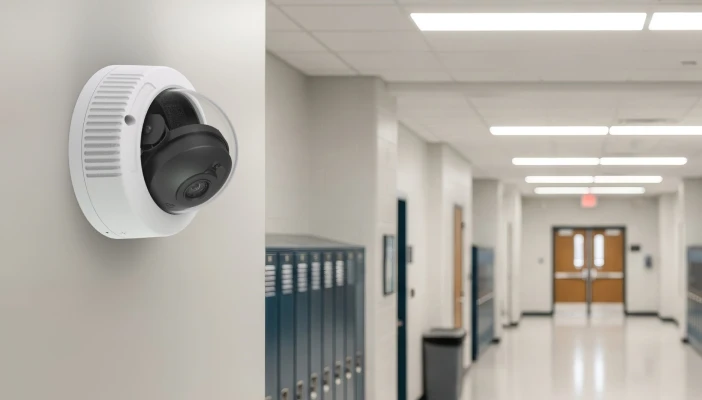Efficiency slips a few seconds at a time. A trailer idles a few extra minutes at the loading dock. A patient room sits uncleaned. A pharmacy window waits on verification longer than planned. Each delay seems harmless alone, but multiplied across days and weeks, they push SLAs out of reach and erode margins. Traditional video adds its own friction: hours of scrubbing footage, jumping between systems, and manual exports that slow every investigation.
AI video security makes these hidden friction moments visible and actionable. The upside is significant: McKinsey estimates AI could add $2.6–$4.4 trillion in annual economic value, highlighting the gains when operations become data driven and responsive.
This article explains operational efficiency in plain terms, provides real-world examples, outlines how to improve with AI, compares traditional approaches with AI video security, and concludes with how Lumana enhances efficiency across multiple sites.
Key highlights
- Minor delays compound into missed SLAs and margin loss; efficiency targets flow, clean handoffs, and less rework.
- AI video security transforms captured scenes into live, actionable signals that prompt timely response and speed investigations.
- Tangible benefits of using AI include shorter queues, lower dwell times, faster room turnover, safer pathways, and leaner inventory across sites.
Table of contents
- What is operational efficiency
- Examples of operational efficiency
- How to improve efficiency with AI
- Traditional vs. AI video security approaches
- How Lumana improves operational efficiency
What Is Operational Efficiency?
Operational efficiency is the ability to deliver required outcomes at the lowest practical time, cost, and effort while meeting quality standards. It focuses on smooth flow, clear handoffs, minimal rework, and consistent service so customers experience speed and reliability without hidden waste.
Organizations build efficiency by designing repeatable processes, aligning staffing and schedules to real demand, and removing idle time, bottlenecks, and changeover friction. Progress is tracked with a small set of KPIs, such as cycle time, first-pass yield, dwell time, cost per order, and SLA adherence, and reinforced through regular reviews that turn improvements into daily practice.
What Are Some Examples of Operational Efficiency?
Operational efficiency is evident in minor, repeatable improvements that eliminate friction and maintain quality. The specifics vary by industry, but the pattern remains the same: shorten waits, prevent rework, and keep work moving without incurring extra costs.
Here are common areas where modest changes compound into a large impact:
- Queue and flow management: track line growth, open an extra lane, and pre-stage staff during predictable peak periods to minimize wait times.
- Dock and yard flow: coordinate appointment slots, load sequencing, and cross-dock staging to reduce dwell and turn bays faster.
- Changeover and setup: standardize steps, pre-stage tools and materials, and use quick-change methods to cut lost minutes between jobs.
- Inventory and replenishment: right-size par levels, tighten cycle counts, and use simple pull signals to avoid stockouts and overstock.
- Safety as throughput: keep aisles clear, enforce PPE where required, and mark pedestrian lanes to prevent stoppages and downtime.
How To Improve Operational Efficiency with AI
Efficiency gains come from a tight loop: see what is happening, act quickly, measure the impact, and scale what works. AI strengthens every step by converting scenes into structured data, surfacing early signals such as queues, dwell times, blocked pathways, and missed PPE, then routing the right task and preserving evidence for coaching and audits.
Start with a few high-leverage areas and build momentum:
- Map the work as it happens. Identify queues, rework loops, and silent waits.
- Instrument priority zones. Utilize cameras and sensors to capture key indicators, such as line growth and aisle blockages.
- Prioritize bottlenecks. Focus on steps with long wait times, high variability, or safety risks.
- Shorten feedback. Put live KPIs on team dashboards and escalate when thresholds are crossed.
- Coach with evidence. Use tagged clips and timelines to reinforce standard work and reduce repeat issues.
- Standardize and scale. Turn wins into reusable playbooks across sites and review results weekly.

Traditional Approaches to Efficiency vs. AI Video Security
Improving efficiency takes more than cost cuts and weekly reviews. Traditional operations react after delays appear, relying on manual checks, fixed schedules, and siloed tools that miss early signals. AI closes those gaps by continuously learning from patterns across systems. It highlights anomalies early, collects data to help influence more intelligent decision-making, and measures outcomes to make improvement a daily practice.
Here’s how traditional operations compare to AI video security-driven operations across key efficiency areas:


How Lumana Improves Operational Efficiency
Lumana applies AI to your existing IP cameras through VMS+, an intuitive platform designed to enhance day-to-day operations. Lumana automates monitoring, surfaces actionable insights in customizable dashboards, and sends targeted alerts to the right roles so teams act faster with fewer manual checks.
Other features include:
- Centralized management: manage unlimited cameras, sites, and users from any browser or mobile.
- Real-time detection and response: behavior-aware alerts for queues, dwell, blocked paths, and missed PPE; trigger workflows in your tools.
- AI-powered investigations: natural-language, multi-attribute search finds the exact clip in seconds.
- Operational insights: dashboards for occupancy, dwell, queue length, and safety trends guide staffing and scheduling.
- Open, reliable platform: hybrid cloud for local performance with cloud sync; continuous learning improves accuracy; integrates with access control, sensors, and other key solutions.
Request a demo today and take the first step toward a more efficient, intelligent, and resilient operation.
Discover the power of AI video security
Related Articles
Workplace safety
Nov 20, 2025
Why AI Accuracy Matters in School Safety: Lessons From Recent Failures
Security management
Nov 6, 2025
AI Physical Security: A Practical Guide to Strategy & Best Practices
Product news
Oct 29, 2025
October Product Update: AI-Powered Gun Brandished Detection
Sign up for the Webinar
Submitted information will be used in accordance with our Privacy Policy.
Efficiency slips a few seconds at a time. A trailer idles a few extra minutes at the loading dock. A patient room sits uncleaned. A pharmacy window waits on verification longer than planned. Each delay seems harmless alone, but multiplied across days and weeks, they push SLAs out of reach and erode margins. Traditional video adds its own friction: hours of scrubbing footage, jumping between systems, and manual exports that slow every investigation.
AI video security makes these hidden friction moments visible and actionable. The upside is significant: McKinsey estimates AI could add $2.6–$4.4 trillion in annual economic value, highlighting the gains when operations become data driven and responsive.
This article explains operational efficiency in plain terms, provides real-world examples, outlines how to improve with AI, compares traditional approaches with AI video security, and concludes with how Lumana enhances efficiency across multiple sites.
Key highlights
- Minor delays compound into missed SLAs and margin loss; efficiency targets flow, clean handoffs, and less rework.
- AI video security transforms captured scenes into live, actionable signals that prompt timely response and speed investigations.
- Tangible benefits of using AI include shorter queues, lower dwell times, faster room turnover, safer pathways, and leaner inventory across sites.
Table of contents
- What is operational efficiency
- Examples of operational efficiency
- How to improve efficiency with AI
- Traditional vs. AI video security approaches
- How Lumana improves operational efficiency
What Is Operational Efficiency?
Operational efficiency is the ability to deliver required outcomes at the lowest practical time, cost, and effort while meeting quality standards. It focuses on smooth flow, clear handoffs, minimal rework, and consistent service so customers experience speed and reliability without hidden waste.
Organizations build efficiency by designing repeatable processes, aligning staffing and schedules to real demand, and removing idle time, bottlenecks, and changeover friction. Progress is tracked with a small set of KPIs, such as cycle time, first-pass yield, dwell time, cost per order, and SLA adherence, and reinforced through regular reviews that turn improvements into daily practice.
What Are Some Examples of Operational Efficiency?
Operational efficiency is evident in minor, repeatable improvements that eliminate friction and maintain quality. The specifics vary by industry, but the pattern remains the same: shorten waits, prevent rework, and keep work moving without incurring extra costs.
Here are common areas where modest changes compound into a large impact:
- Queue and flow management: track line growth, open an extra lane, and pre-stage staff during predictable peak periods to minimize wait times.
- Dock and yard flow: coordinate appointment slots, load sequencing, and cross-dock staging to reduce dwell and turn bays faster.
- Changeover and setup: standardize steps, pre-stage tools and materials, and use quick-change methods to cut lost minutes between jobs.
- Inventory and replenishment: right-size par levels, tighten cycle counts, and use simple pull signals to avoid stockouts and overstock.
- Safety as throughput: keep aisles clear, enforce PPE where required, and mark pedestrian lanes to prevent stoppages and downtime.
How To Improve Operational Efficiency with AI
Efficiency gains come from a tight loop: see what is happening, act quickly, measure the impact, and scale what works. AI strengthens every step by converting scenes into structured data, surfacing early signals such as queues, dwell times, blocked pathways, and missed PPE, then routing the right task and preserving evidence for coaching and audits.
Start with a few high-leverage areas and build momentum:
- Map the work as it happens. Identify queues, rework loops, and silent waits.
- Instrument priority zones. Utilize cameras and sensors to capture key indicators, such as line growth and aisle blockages.
- Prioritize bottlenecks. Focus on steps with long wait times, high variability, or safety risks.
- Shorten feedback. Put live KPIs on team dashboards and escalate when thresholds are crossed.
- Coach with evidence. Use tagged clips and timelines to reinforce standard work and reduce repeat issues.
- Standardize and scale. Turn wins into reusable playbooks across sites and review results weekly.

Traditional Approaches to Efficiency vs. AI Video Security
Improving efficiency takes more than cost cuts and weekly reviews. Traditional operations react after delays appear, relying on manual checks, fixed schedules, and siloed tools that miss early signals. AI closes those gaps by continuously learning from patterns across systems. It highlights anomalies early, collects data to help influence more intelligent decision-making, and measures outcomes to make improvement a daily practice.
Here’s how traditional operations compare to AI video security-driven operations across key efficiency areas:


How Lumana Improves Operational Efficiency
Lumana applies AI to your existing IP cameras through VMS+, an intuitive platform designed to enhance day-to-day operations. Lumana automates monitoring, surfaces actionable insights in customizable dashboards, and sends targeted alerts to the right roles so teams act faster with fewer manual checks.
Other features include:
- Centralized management: manage unlimited cameras, sites, and users from any browser or mobile.
- Real-time detection and response: behavior-aware alerts for queues, dwell, blocked paths, and missed PPE; trigger workflows in your tools.
- AI-powered investigations: natural-language, multi-attribute search finds the exact clip in seconds.
- Operational insights: dashboards for occupancy, dwell, queue length, and safety trends guide staffing and scheduling.
- Open, reliable platform: hybrid cloud for local performance with cloud sync; continuous learning improves accuracy; integrates with access control, sensors, and other key solutions.
Request a demo today and take the first step toward a more efficient, intelligent, and resilient operation.








